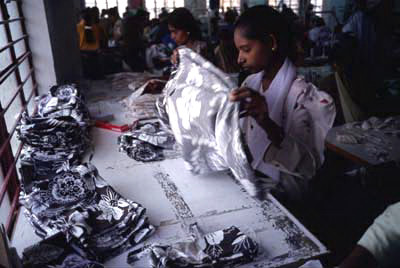Predatory Growth in India
Alejandro Nadal
Translated by Supriyo Chatterjee

The Indian economy has maintained high levels of growth for several years and for many is an example worth following. It is even said that the experience of the subcontinent shows that neo-liberalism can certainly function. The reality is otherwise. The evolution of the Indian economy is a pathological process that feeds off social inequality and environmental destruction.
India maintained a modest growth after independence in 1947. The industrialisation project sustained a limited but stable expansion (4 per cent) from 1950 to 1980. Per capita income grew an annual average of 1.3 per cent in that period. The commercial balance was in permanent deficit and the economy was closed to commercial and capital flow.
The world debt crisis of the Eighties tied India to the dictates of the International Monetary Fund and in the Nineties neo-liberal cuts were imposed, which represented a radical turn in the political economy. In the past 10 years, India has had on average an annual growth of 6.8 percent. The international press has presented this as an economic miracle. In these years inequality and poverty has worsened in India. Today, 42 per cent of the total population of that country (1,173 million) live on less that one dollar a day. Some 75 per cent of the population live on two dollars a day and the economic model is not going to overturn such an unequal structure.
Despite the growth rate of 6-7 per cent, the increase in formal employment in India is tardy and does not cross 1 per cent annually. Obviously, this means that the economic expansion is supported by very important increases in productivity. This is related to the strategy of positioning inversion towards exports, which requires reducing to the maximum the costs of salary so as to compete. For this the "rationalisation" of the productive chain is accompanied by strong cuts in employment.
Despite the "miracle" in these rates of growth, Indian maintains a chronic deficit in its external accounts and needs to finance it. For that it has opted to receive capital flows, as much in direct foreign investment as in portfolio investments (short-term capital). But this entails an enormous cost: the macroeconomic policies have to respect the rules of the game which have nothing to do with the needs of the Indian population. The monetary policy is dominated by the need to attract capital to the Indian economic space. This implies maintaining high levels of interest. Moreover, only the privileged have access to credit. This leaves a regressive slant in the distribution of riches to privilege the portfolios of the richest strata and deepen inequality. But this is irrelevant: what matters is maintaining the flow of capital which allows financing the external debt.
All this explains that India today has the highest reserves in its history (some $230 billion). In this it seems like China but the difference is that country has an enormous surplus in its commercial balance while India suffers chronic deficit. The Indian reserves are not its own; these are reserves which can evaporate at any moment. The fiscal policy is governed by the dogma of balanced budget and as the owners of capital are not to be inconvenienced, the fiscal equilibrium is achieved by cutting social spending and reducing the quantum of resources for conserving the environment.
The opening up to foreign investment is based on the handing over of concessions in the extractive industries, forestry and tourism. This leads to displacement from land in which the reserves are found (iron in Chhattisgarh, bauxite in Orissa, etc) or are covered in dense forests which represent an easily accessible commercial wealth. Much of these lands are homeland to the original people or the adivasis (a word derived from Sanskrit which means the first forest inhabitants). The adivasis are less than 8 per cent of India's population but constitute 40 per cent of the population displaced from valleys, hills and river basins. The handing over of their lands to the megacorporations in the extractive and tourist industries is one of the most violent features of the neo-liberal "miracle" in India.
Economist Amit Bhaduri, professor emeritus of Jawaharlal Nehru University in New Delhi, has described this as predatory growth. It has to be clarified that this is not dealing with a metaphor. It is actually a complex economic and political process in which the losers hand over their way of life to a "growth" which benefits a few and cannot lift the level of life for the majority of the population.
The parallels with Mexico are extraordinary. Really, the only difference is the levels of growth. The rest is identical. The same model, the same injustice.
___________________________________________________________________________________
Source: http://www.tlaxcala-int.org/article.asp?reference=586 Photo: http://www.aliciapatterson.org/APF2101/Wells/Wells.html
























